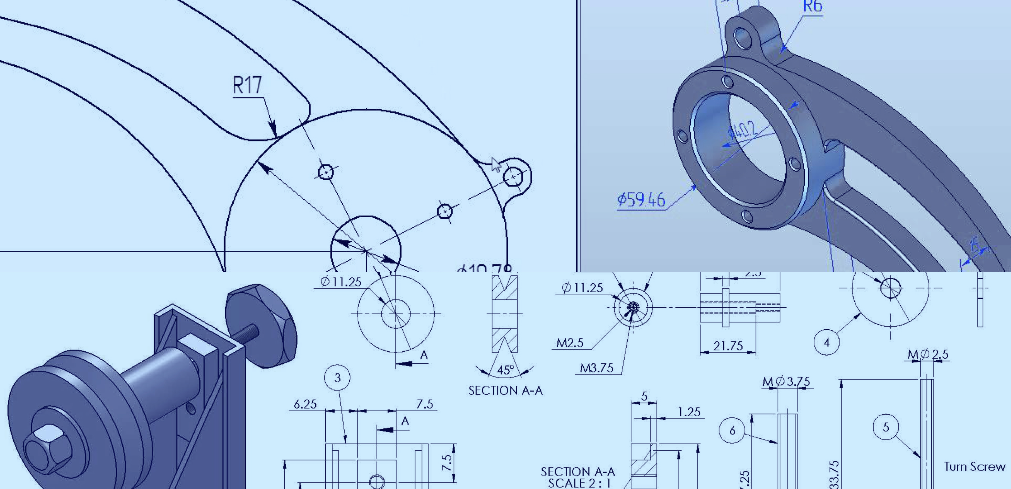Table Of Content

CAD is also used for the visualization and design of products in a wide variety of other sectors, including city planning, animation, metal fabrication, carpentry, fashion, interior design, game design and manufacturing. Increased productivity – Designers using CAD can work faster, smarter and cheaper. This is because it removes the need to draw everything by hand, makes for easier edits and allows for accurate testing before developing a prototype. This allows for more efficient work, which in turn means companies can employ less designers, making for an all-round quicker and more affordable design process than traditional methods. CAD software continued to grow throughout the 80s and 90s, although it remained restricted mostly to larger companies during this time.
Littleton Campus
Finally, remember that not all CAD programs are compatible with all operating systems. While some run on Windows, others are only available on Mac, and not every CAD software is available on mobile operating systems. As we’ve previously covered, the availability of high quality free CAD programs means that it’s available to everyone, regardless of budget.
Choose the CAD Course That Aligns Best With Your Educational Goals
Your computer’s graphic card is what makes CAD visualization possible, so having a high quality card like a Nvidia or AMD will help you get the most out of your CAD program. CAD software such as Inventor and Fusion 360 help industrial product designers both visualize objects and understand how they will function. For example, CAD is used in car design to conceptualize and render automotive designs.
CAD Plant 3D
Together, CAD and building information modelling (BIM) provide a powerful combination of digital tools that empower structural and MEP engineers to deliver safe, efficient and compliant building projects. Professional-grade product design and engineering tools for 3D mechanical design, simulation, visualisation and documentation. Draught, annotate and add field data to your drawings online via your web browser or mobile device. Access and edit DWG files and quickly collaborate with AutoCAD users on designs.
CAD refers to the use of computers in the design process of objects, structures and buildings. It’s primarily used to create highly accurate 2D drawings and 3D models, but it covers every step in the design process, from conceptualization to testing. For example, CAD software is used by architects to create floor plans of buildings and houses, and these floor plans contain most of the information that would be needed to construct the inside of the building.

To learn more about ACC’s CAD certificate programs in architecture and interior design, or to talk with one of our instructors about enrolling in a program, visit the Computer Aided Drafting program page on our website. It enables the creation of intricate 3D models, optimises them for printing and generates compatible file formats such as STL. CAD tools facilitate the addition of support structures and help ensure model accuracy and scaling. By interfacing with slicing software, CAD helps divide models into printable layers and prepares them for 3D printing. The software also aids in prototyping, refining designs and preventing errors before the final print.

CAD Development History at a Glance
CAD enables designers to layout and develop work on screen, print it out and save it for future editing, saving time on their drawings. It’s used across a wide range of engineering fields, including buildings, infrastructure, telecommunications networks, electrical circuits, thermodynamics and mechanical parts. Like in architecture, engineers use BIM CAD software to help improve structural fabrication, minimize errors and streamline collaboration.
As well as floor plans, CAD can be used to create technical drawings and blueprints, piping and instrumentation diagrams, HVAC diagrams, site and plot plans, electrical schematics, and wiring diagrams. The Drafting and Design Engineering Technology program offers the technical training necessary for students choosing a drafting/design career in the fields of architecture, construction, manufacturing, and engineering. This program provides a strong academic and technical base, giving the graduate the needed skills and knowledge for immediate employment and the foundation for professional growth. Whether you’re an architect, designer, or engineer, you’ve probably used 2D or 3D CAD programs such as AutoCAD, AutoCAD LT, Civil 3D, Inventor, or Fusion 360 software. These widely used tools can help you explore design concepts, visualise with photorealistic renders and simulate real-world performance. Advanced CAD systems such as solid modeling programs are able to simulate stress tests on 3D models.
Top-end CAD systems offer the capability to incorporate more organic, aesthetic and ergonomic features into the designs. Freeform surface modeling is often combined with solids to allow the designer to create products that fit the human form and visual requirements as well as they interface with the machine. There are both paid and free CAD software available, meaning it’s accessible to beginners and hobbyists. While CAD is used in the design process, it can’t be used to actually create physical objects and structures. For that, you need to use a computer-aided manufacturing (CAM) program along with a manufacturing machine. Easier to understand – 3D models can be much easier to understand and comprehend than complex physical sketches.
The designers are able to feed details such as the dimensions and density of the materials chosen in order to determine the overall weight of the structure. Some of the best solid modeling software in the market includes SolidWorks and Unigraphics NX. CAD is constantly evolving, with every new version of a particular software bringing new updates and features. Both free and paid programs are becoming more powerful each year, and some tools, such as Autodesk’s Dreamcatcher, are even incorporating AI to further improve the quality and efficiency of the design process.
At YTI Career Institute in Pennsylvania, we offer a Computer Aided Drafting and Design program that will help you acquire the skills and knowledge you need for a career in this rewarding field. Wiring diagrams show the actual connection of wires to each other and to other components in an electrical system, as well as where the components are physically located within the system. Heating, ventilation, and air conditioning (HVAC) drawings provide information about the ventilation, heating and air conditioning systems within a given location. They can include the size and location of ductwork, connections to control units, as well as the relationship and connections between various components.
Once you know what you want to draw, then you can convey the image to the machine. The development of CAD programs began as early as 1949 with applications that were used to analyze and optimize power systems, as well as design circuits using basic geometrical shapes. However, it was the invention of a program called Sketchpad by Ivan Sutherland in the sixties that really set the ball rolling for modern CAD technology. He developed the program as part of his doctoral thesis at Massachusetts Institute of Technology, (MIT), to demonstrate the fundamentals of technical drawing with a computer. You can learn from top-ranked schools like University of Illinois at Urbana-Champaign and National Taiwan University, or take courses directly from Autodesk, one of the leading CAD software producers. The CAD courses we offer are designed to provide you with the necessary skills and knowledge to excel in the field of computer-aided design.
They allow you to use different colors and names for the layers and give you the freedom to adjust any part of any layer without redoing the whole project. For example, an architect can develop the basic framework of a new skyscraper building and send it to a structural engineer to evaluate the structural integrity and determine the best materials to use. After feedback, a sanitation expert can have their take on the water supply and drainage systems.
Design & Drafting Technology - Intro to Design Software - Southeast Community College News
Design & Drafting Technology - Intro to Design Software.
Posted: Thu, 13 Jul 2023 02:30:12 GMT [source]
Local agencies and consultants must also use these established standards for Caltrans projects. This manual is subject to changes that reflect Caltrans' current development/delivery process using MicroStation and Civil3D for all projects on the State Highway System (SHS). Computer-aided design touches so many aspects of our everyday world, it’s hard to measure. Your phone was probably designed through CADD, and the car you drive was probably manufactured with it. If you like technology and want a career that has impact, you may be a great candidate for a drafting career.
Some CAD software are best used on processors with multiple cores, while other programs can’t handle them, so knowing this will help you find the best CAD tool for you. CAM uses numeric control software and encodes automated instructions for a machine, such as a 3D printer, CNC router or laser cutter. The best results are achieved when both CAD and CAM are used together, as they provide much more control over the entire process from conceptualization through to realization. These 3D models are therefore used in a wide variety of industries, such as for creating intricate visualizations in the automotive and manufacturing sectors.
The collection of this information for a particular CAD program makes up the system requirements. The lowest configuration of components acceptable to make the program work is defined as its minimum system requirements. If you are looking for a balance between great functionality and affordability, TurboCAD Deluxe is the product for you. It is reasonably priced at under $200 and comes highly recommended for user-friendliness. TurboCAD deluxe has additional tools such as House Wizard TM that helps you learn how to use the program quickly. CAD systems have preset algorithms that have been programmed to increase the accuracy of drawings.

No comments:
Post a Comment